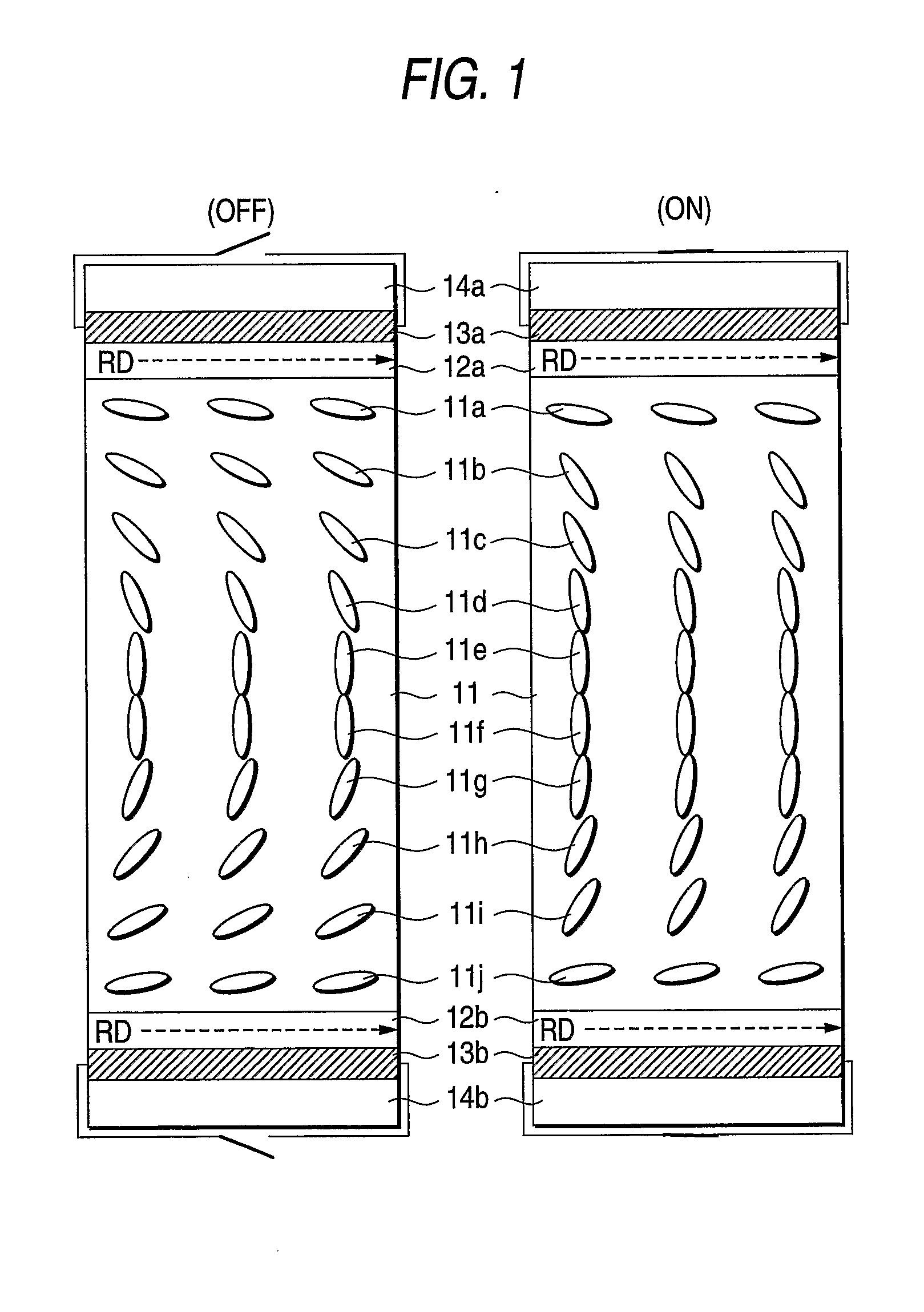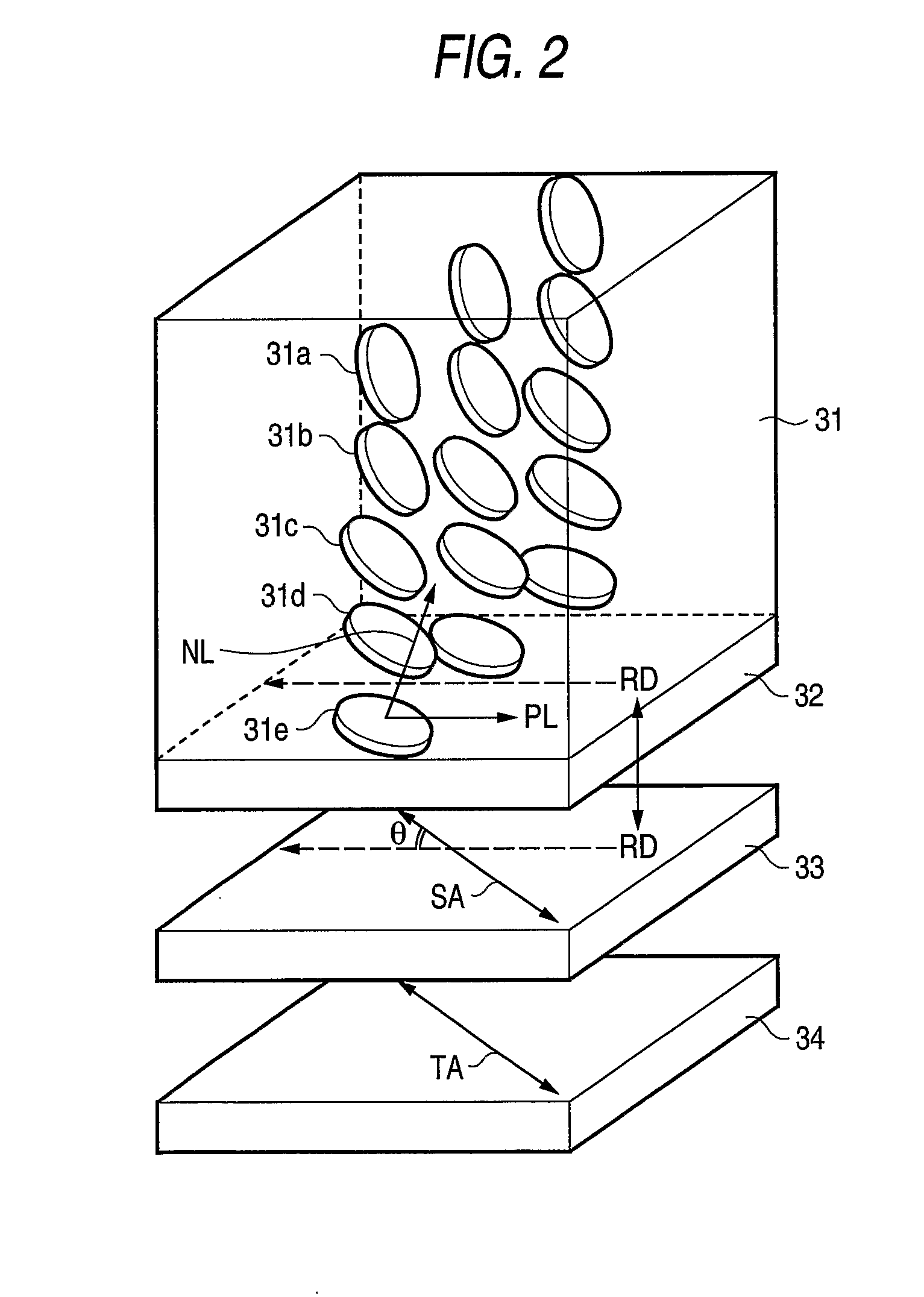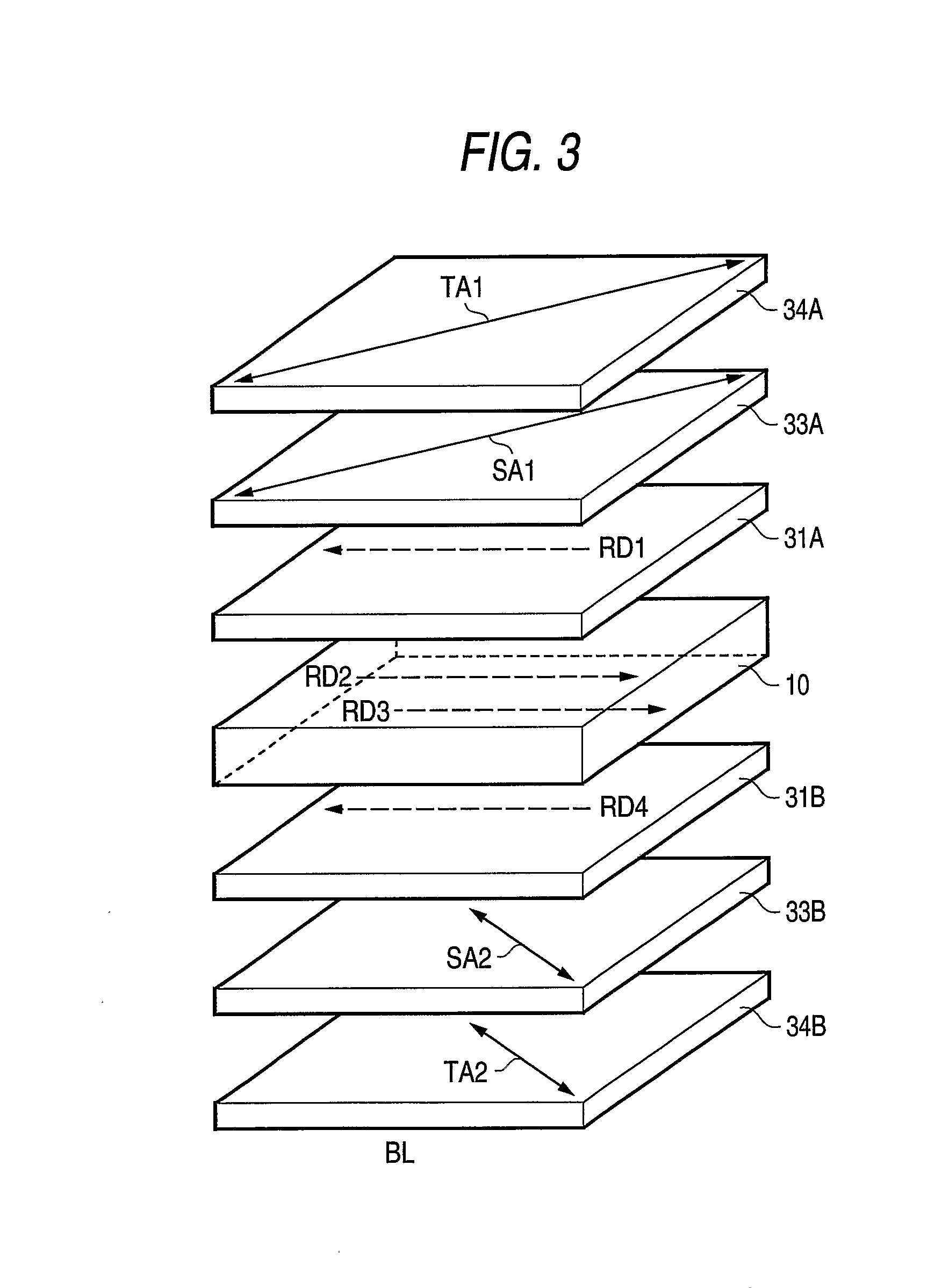Optical Compensation Film, Polarizing Plate and Liquid Crystal Display
- Summary
- Abstract
- Description
- Claims
- Application Information
AI Technical Summary
Benefits of technology
Problems solved by technology
Method used
Image
Examples
example 1-1
Preparation of Second Optical Anisotropic Layer A
[0692]The components set forth in Table 1-2 were charged in a mixing tank where they were then heated with stirring to prepare a cellulose acetate solution.
TABLE 1-2Formulation of materials and solventsOuter layer sideInner layer sideCellulose acetateSubstitution degree: 2.87Substitution degree: 2.75Percent acetylation: 60.9%Percent acetylation: 59.5%100parts by mass100parts by massTriphenyl phosphate (plasticizer)7.8parts by mass7.8parts by massBiphenyl diphenyl phosphate3.9parts by mass3.9parts by mass(plasticizer)Methylene chloride (first solvent)300parts by mass300parts by massMethanol (second solvent)45parts by mass45parts by massDye (360FP, produced by Fine-chem Co.,0.0009parts by mass0.0009parts by massLtd.)Retardation raising agent (41-trans)1.32parts by mass1.32parts by mass
[0693]The dope thus obtained was then casted using a casting machine having a band having a width of 2 in and a length of 65 m. When the temperature of th...
example 1-2
Preparation of Second Optical Anisotropic Layer B
[0704]The components set forth in Table 1-3 were charged in a mixing tank where they were then heated with stirring to prepare a cellulose acetate solution.
TABLE 1-3Formulation of materials and solventsOuter layer sideInner layer sideCellulose acetateSubstitution degree:Substitution degree:2.872.75Percent acetylation:Percent acetylation:60.9%59.5%100parts by mass100parts by massTriphenyl phosphate (plasticizer)7.8parts by mass5.3parts by massBiphenyl diphenyl phosphate (plasticizer)3.9parts by mass2.7parts by massMethylene chloride (first solvent)300parts by mass300parts by massMethanol (second solvent)45parts by mass45parts by massDye (360FP, produced by Fine-chem Co., Ltd.)0.0009parts by mass0.0009parts by massRetardation raising agent (41-trans)1.32parts by mass—Retardation raising agent (shown below)—4.45parts by massRetardation raising agent
[0705]The dope thus obtained was then casted using a casting machine having a band having ...
example 2-1
Preparation of Cellulose Acetate Solution
[0720]The following components were charged in a mixing tank where they were then heated with stirring to prepare a cellulose acetate solution.
Formulation of cellulose acetate solutionCellulose acetate having a percent100parts by massacetylation of 60.9%Triphenyl phosphate7.8parts by massBiphenyl diphenyl phosphate3.9parts by massMethylene chloride300parts by massMethanol45parts by mass
[0721]Into a separate mixing tank were charged 4 parts by mass of a cellulose acetate (linter) having a percent acetylation of 60.9%, 25 parts by mass of the following retardation raising agent, 0.5 parts by mass of a particulate silica (average particle diameter: 20 nm), 80 parts by mass of methylene chloride and 20 parts by mass of methanol which were then heated with stirring to prepare a retardation raising agent solution.
[0722]Retardation raising agent
(Preparation of Optical Anisotropic Layer 2)
[0723]470 parts by mass of a cellulose acetate solution were m...
PUM
 Login to View More
Login to View More Abstract
Description
Claims
Application Information
 Login to View More
Login to View More - R&D
- Intellectual Property
- Life Sciences
- Materials
- Tech Scout
- Unparalleled Data Quality
- Higher Quality Content
- 60% Fewer Hallucinations
Browse by: Latest US Patents, China's latest patents, Technical Efficacy Thesaurus, Application Domain, Technology Topic, Popular Technical Reports.
© 2025 PatSnap. All rights reserved.Legal|Privacy policy|Modern Slavery Act Transparency Statement|Sitemap|About US| Contact US: help@patsnap.com



